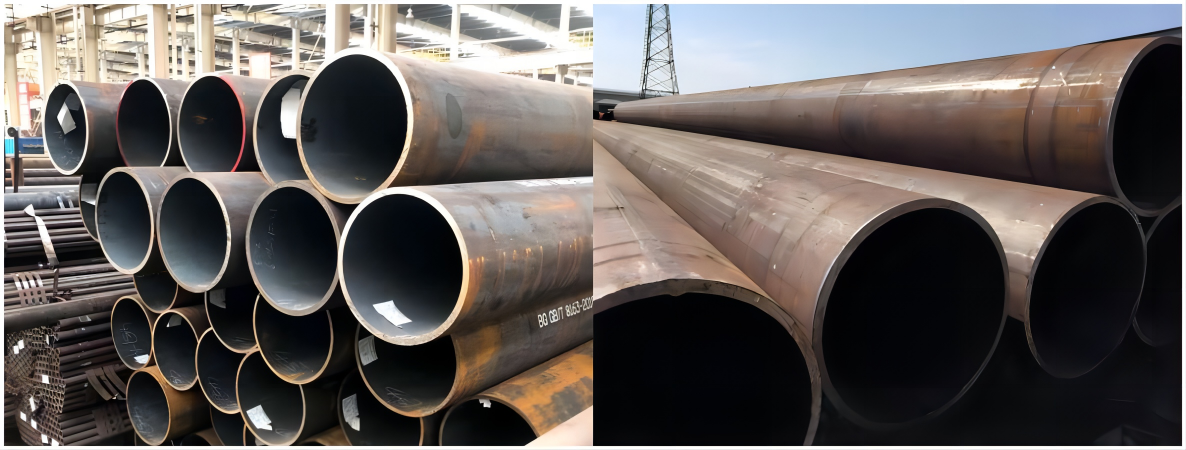Straight seam welded steel pipes are divided into high-frequency resistance welding and submerged arc welding according to the welding process. Straight seam submerged arc welding is referred to as UOE, and straight seam high-frequency resistance welding is referred to as ERW.
Since straight seam submerged arc welding (UOE steel pipe) adopts the post-weld cold expansion process to expand the pipe, the geometric dimensions of UOE steel pipe are relatively accurate. Part of the internal stress is eliminated. In addition, multi-wire welding (three wires and four wires) is used for welding UOE steel pipes. Such a welding process generates less linear energy during welding and has less impact on the heat-affected zone of the base metal. The welding wire after multi-wire welding can eliminate the stress generated during welding for the front welding wire, thus improving the mechanical properties of the steel pipe. The base material can achieve 100% ultrasonic flaw detection of each steel plate, which meets the requirements of high-pressure pipelines for the base material. However, although the comprehensive performance of UOE steel pipe is superior to other steel pipes, its high price discourages users with tight funds.
ERW steel pipes are mainly used in land long-distance pipelines such as natural gas, refined oil, crude oil, and pulp. UOE steel pipes are mainly used in high-pressure submarine long-distance pipelines, alpine regions, and onshore Class II, III, and IV areas.
